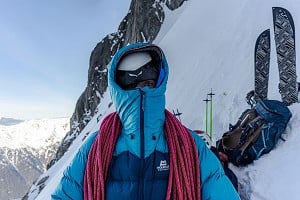
No two winters are the same, ice climbers and other winter sports enthusiasts all see that more clearly than most. Here in Finland the cold weather came late and suddenly this year and accompanied by little snow. It did not last nearly as long as normal either. Last winter it snowed heavily in late November and stayed cold well into April. Winter gear needs to be flexible: winter can be many weeks of frigid air where you hear the world cracking as a deep still cold freezes everything or it can be roaring south westerlies, hurling an Atlantic load of sleet, rain and snow at you.
The actual temperature associated with the first may be much lower, but the damp “warm-cold” so common in Britain's maritime-influenced mountains can often be just as hard to defend against. Traditionally down jackets have been better for the first type of cold, let's call it “cold-cold”, because cold-cold is dry. Warm-cold normally involves dampness, the enemy of down's insulating properties.
The Jöttnar Fjörm is one of the new breed of hydrophobic down jackets aiming to increase their versatility by making them less affected by dampness. Jöttnar is using down from a US company called Down-Tek.
Something cool-sounding to do with nano-technology is done to the down, but the outcome is that it remains as lofty and breathable as it was before processing but much more resistant to collapsing from getting wet.
- DOWN-TEK water repellent down insulation
- 850 fill power, 93/7 premium goose/duck down ratio
- Body-mapped down fill schedule
- Box wall torso construction for warmth
- Stitch through arm construction for light weight
- Duoregulation ADVANSA Thermo cool 120 insulation in wet-out zones at cuffs, hem and collar
- 20 Denier windproof, rip-stop nylon main body outer with DWR finish
- Weight: 537g
- Price: £295
One of my central questions about the Fjörm then is does the hydrophobic technology work? Well, sort of would be my conclusion.
Back in December we caught the last day of a week of freezing temperatures and snow to go mixed climbing. It felt bitterly cold all day; low, thick cloud and gusty winds brought continuous snow but the temperature went up from around -10 to zero by sunset (which is depressingly at about 3 pm at these latitudes). The snow flakes became damper and heavier through the day and by afternoon it was sleet. The Fjörm worked great and shrugged off the dampness, although how much of that was the result of the water resistant shell and how much the hydrophobic down itself was hard to tell.
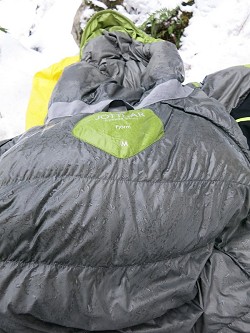
The 'hydrophobic-ness' met its match in late February ice climbing in what turned out to be rain (the forecast had been 'only' for sleet). This wasn't helped by the fact that stupidly I left the Fjörm inside out next to my pack whilst walking down the lake to do a few ice falls in another sector. When I got back to it, you could only describe it as very soggy. I pulled it on over my (wet) shell and it still felt warm but getting home I could see holding it up to the light that the down was clumping together at the bottom of the baffles. Nevertheless, it had by no means completely collapsed and seemed to dry very quickly once hung up in the warm.
When the temperatures plummeted in January, the Fjörm really came into its own. It was the perfect belay jacket ice climbing on a -17 day, shrugging off wind and deep cold. Worn over my base-, mid- and shell-layers, I was not just comfortable but actually cosy inside. At -20 it was cold enough to wear it whilst moderately active – walking and tour-skating on the lakes but I had to keep it mellow to avoid overheating! I did try it over just a base layer at -20, it was fine but you could notice areas where your body shape compress the down slightly – over the shoulders for instance – where it felt colder. This is a slightly silly experiment but one that does show up cold patches in jackets. The Fjörm does not really have them, I suspect mainly because of its box wall construction.
Overall the Fjörm showed itself to be an excellent jacket in very cold temperatures. But the Fjörm isn't simply a very warm jacket – it is packed with technical features too and I've found it very usable when climbing as a result.
There are some panels (elbows and hem for example) that use synthetic insulation instead of down. These are areas most likely to get wet where synthetic insulation will have an edge. The hood is superb – it goes easily over helmets but cinches down to be warm and comfortable without. The zip goes high offering plenty of protection for your face and the wire peak works great. The outside hand warmer pockets are fine to stuff things in and there is a biggish internal pocket for a camera or the like.
As it is a belay jacket I would have liked mesh drop pockets at the bottom for wet gloves to go in but perhaps being down makes that less a good idea than on synthetic jackets.
The two way zip works well when belaying, but crucially it doesn't come undone when you don't want it to. The fit is great, it doesn't feel baggy pulled on over just a fleece, but it still works well pulled over a shell jacket and harness loaded with gear when you are climbing. And it is worth noting again – it is a box wall jacket, not stitch-through, which significantly improves its insulating ability.
With puffy 850 fill power down and a host of technical features the jacket looks big, bulky and heavy when dumped in a heap on the floor, but on my scales the Fjörm weighs only 604 grams. Jon Doran at Outdoor Magic noted this puts it in a rather good niche; lighter than most other box-wall “expedition” down parkas – often considerably so – while lighter down jackets tend to be stitched-through so not as warm.
In terms of protection and warmth the Fjörm is in the same class as the warmest synthetic belay jackets that weigh nearly twice as much. The hydrophobic down also goes some way to taking away the most obvious advantage of synthetically insulated belay jackets although I believe a Primaloft or similar jacket will still have the edge in damp, “warm-cold” conditions. Nevertheless, for “cold-cold”, the Jöttnar Fjörm is the best belay jacket I've ever used.
About Toby Archer
Toby is based in Finland. He describes himself as: "a writer and researcher specialising in international security politics; finally no longer a PhD student; hopeless but enthusiastic climber; part-time gear reviewer; keen multi-role cyclist; idealist and cynic"
Climbing keeps him from getting too depressed about politics. He blogs about both at:
Light from the North - chilled thoughts from the top of Europe.

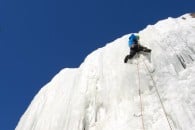

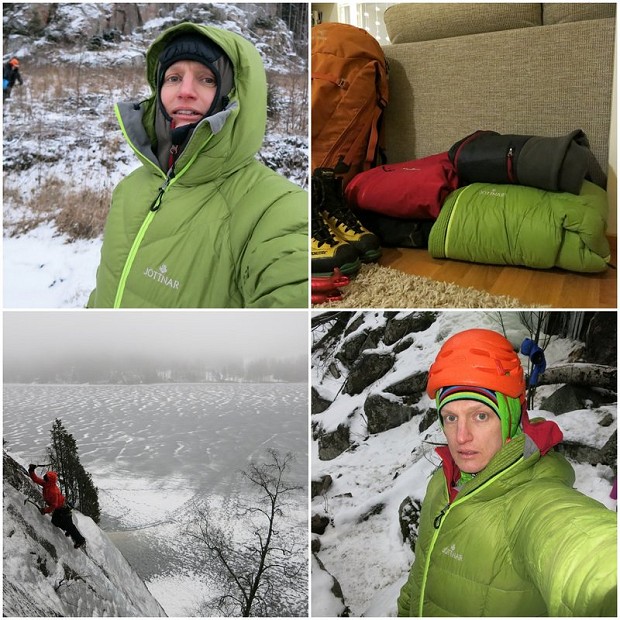
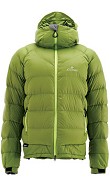
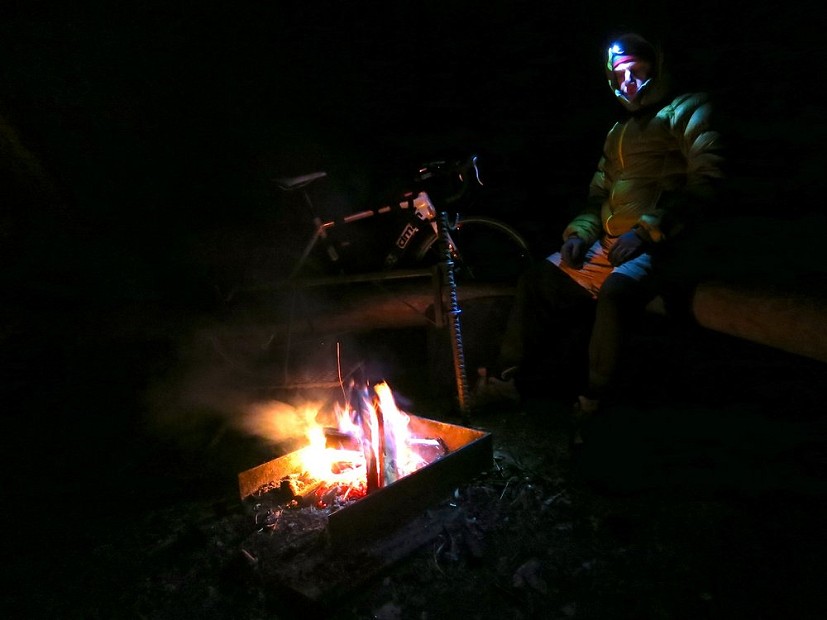
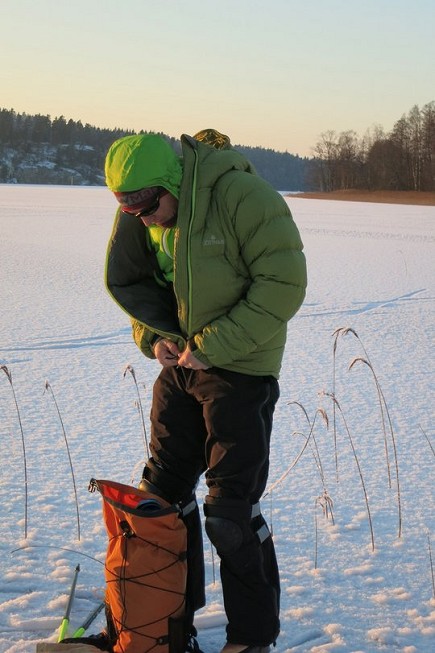
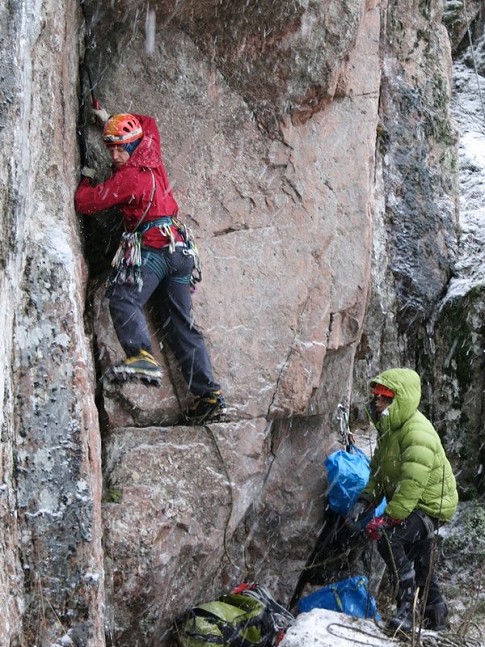

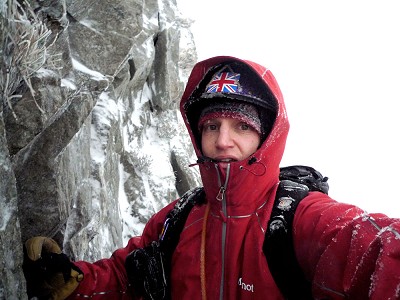
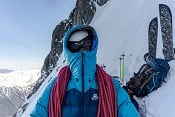
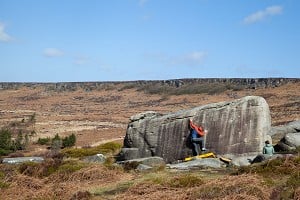

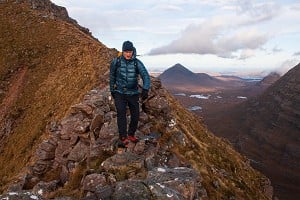

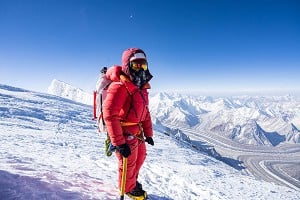

Comments